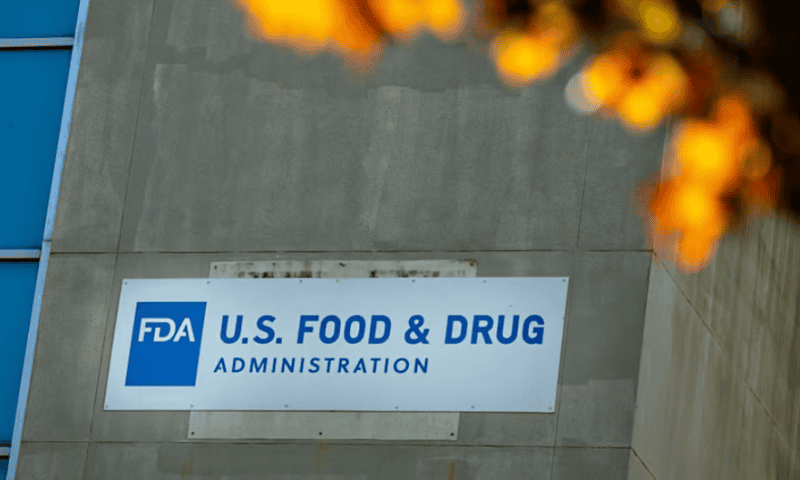ANAHEIM, California — At the AdvaMed MedTech Conference, an FDA official outlined the tasks set for the years ahead as it moves to increase its oversight of lab-developed tests (LDTs), which have so far been spared the agency’s enforcement.
“The FDA has been concerned about laboratory-developed tests and how accurate they may be for quite some time,” said Elizabeth Hillebrenner, associate director for scientific and regulatory programs at the agency’s Center for Devices and Radiological Health, during a panel on diagnostics reform.
Hillebrenner described how the FDA started to identify concerns about the growing use of LDTs more than a decade ago—and how those issues fell under the microscope during the pandemic.
“COVID in particular gave us insight into the scope of how laboratories are going about the validation of their LDTs, in a way that we had never had such broad insight before and across so many different labs,” she said. “And so our concerns have grown dramatically in recent years.”
Starting in 1976 when Congress instituted modern medical device regulations, the FDA said it would exercise its enforcement discretion around LDTs—which, at the time, were considered to carry much lower risks. These tests were typically used on a very small scale, developed as needed for local requirements on equipment similar to hardware already cleared for clinical use.
“Things have changed in the last 50 years, and the landscape of LDTs has dramatically evolved,” Hillebrenner said. “They are much more complex. Now we have the ability to sequence a whole genome and apply complex algorithms, some of which include AI, to the interpretation. They are also used for higher-risk applications, with some of these tests being the sole determinant of which treatment a patient will get.”
Late last month, the FDA put forward its proposal (PDF) to regulate LDTs, drafting a regulatory rule that would bring those tests in line with how it approaches other in vitro diagnostics. The agency said that many systems developed by laboratories are functionally the same and are currently being used interchangeably by healthcare providers.
Enforcement will begin in a series of phases spanning four years after the rule is finalized, starting with the requirement that LDT makers begin reporting to the FDA any adverse events associated with their product, as well as any corrections or removals from the market. In the second year, the FDA would begin collecting registrations to build a list of products as well as start enforcing labeling requirements.
“It’s sort of mind-boggling to think about. We have no idea exactly how many LDTs are out there, or who’s running what test and for what purpose—we have some estimates from our economic analysis … but those are estimates because no one has a central reporting of all of these,” Hillebrenner said. “So we want to get that information early on in the process, so that everybody has an idea of what’s out there.”
Quality system requirements would come in the third year, such as the standards provided under the CLIA laboratory regulations. In the years after that, tests would begin to be subject to premarket review starting with high-risk LDTs, such as noninvasive prenatal screening tests or certain companion diagnostics.
But whether these requirements would lead to stacks of product submissions flooding the desks of FDA reviewers—based on a currently unknown number of tests in the wild—remains an open question, Hillebrenner said.
The FDA has asked specifically for industry and public feedback on how its enforcement discretion could continue as it takes on these new duties, while still addressing its public health concerns over the dangers of delivering patients potentially inaccurate and harmful test results—such as potential carve-outs for academic medical centers, for example.
At the same time, the agency plans to allow the use of current LDTs to continue while it eventually conducts premarket reviews—effectively only taking them off the market if accuracy issues cannot be resolved. “We want to have a smooth, orderly transition with minimal to no disruption to the market,” Hillebrenner said.
The last stages of premarket reviews would also not kick in before the next generation of user fee legislation is set to take effect, giving the FDA, the industry and Congress time to codify an approach to LDTs after the agency has gathered more information about how prevalent these tests can be.
Panel member Ami Simunovich, BD’s chief quality and regulatory officer, said legislation should be the way forward.
“You can have multiple stakeholders put in their viewpoints, put in the specific areas in which they need to call attention to, and ensure we have a balanced approach,” Simunovich said. “What should be the focus of all of this is our patients and the public health, and I think from that perspective you can’t answer everything in one rule—but we can have a broader dialogue when we talk about legislation.”
But, at the same time—after years of waiting for the FDA’s action and amid fluctuations in approaches to LDT regulations between the Trump and Biden administrations—the proposed rule “takes a step toward a world where there’s less uncertainty,” according to Kristen Cook, managing director and partner at Boston Consulting Group.
“In the very near term, it probably feels even more uncertain, because we don’t know what the final rule will be—depending on comments and depending on potential legal challenges,” Cook said, but added that “just resolving the uncertainty will be hugely helpful” from the perspective of medtech investors and diagnostic companies looking to innovate in biomarkers.
However, it may be difficult for smaller operations to comply with some of the regulatory changes, she said, such as pathology labs or hospitals looking to focus on a new approach to a rare disease.
“I’d just like to add that it’s not innovation if it doesn’t work,” Hillebrenner said.

